Join More Than 50,000+ Subscribers and get latest camera news and rumors
NEW CAMERA VIDEOS ON YOUTUBE
|
By admin, on March 18th, 2025

Let’s talk about the Nikon ZV camera. It’s a rumored camera that features the goodness of all the video core specs that we have already seen in the Nikon Z6 Mark 3, but it’s actually an extension of Nikon’s new videography cinema mirrorless line.
Nikon ZV / Z6V Rumor
As per the recent set of rumors we have from the rumor mill, Nikon is currently working on a video-oriented Z6 Mark 3 camera, which uses the same 24.5-megapixel sensor as now, and it has a body that looks very, very similar to the Sony FX3 camera. You can relate to that, or you can also relate to the Nikon Z30, which does not have an electronic viewfinder inside it. So, you can just imagine a full-frame variant of the Nikon Z30 using the Z6 III sensor.
Possible Naming and Branding
The name of the camera is actually not known yet, but we are calling it Nikon ZV. It may also be called Nikon Z6V at the time of announcement. The rumor mill is suggesting that Nikon may start its video-focused branding with the ZV name.
Nikon Z6 III Key Features
The Nikon Z6 III camera was launched in 2024, and the camera features a 24.5-megapixel stacked sensor, which offers approximately 3.5x faster readout speed compared to its predecessor. Due to that, and with the pairing of the Expeed 7 image processor, the camera is able to capture 6K 60 FPS RAW videos, and it can save internally at the same time. You can also record 4K 120 FPS with slight crop and Full HD videos per second, making it a perfect choice. At the same time, the upcoming ZV camera will have all the possible set of core specifications that we have already witnessed in this camera by extending it further.
Nikon ZV / Z6V Specification (Expected)
Core Imaging and Processing
- 24.5MP Partially-Stacked CMOS Sensor
- EXPEED 7 Image Processor
- Up to 20 fps Raw, 60 fps JPEG Shooting
- Blackout-Free, 5760k-Dot EVF
- 493-Point AF with AI-Based Subject Detection
Advanced Video Capabilities
- 6K 60p N-RAW, 6K 30p ProRes RAW
- 4K 120p, Full HD 240p Slow Motion Video
- Open Gate Recording
- 2x-anamorphic squeeze or custom aspect ratios.
- shutter angle control
- false color display,
- DCI-Spec Alignment
- Enhanced post-production stabilization, complementing 5-axis IBIS & electronic VR.
- Internal ND Filters
- Active Cooling System – Enables longer high-frame-rate video recording by preventing overheating.
Enhanced Audio and Connectivity
- 32-Bit Audio Support – Upgraded from 24-bit PCM, offering higher fidelity for post-production, plus line-in and XLR accessory compatibility.
- Multiple USB Ports & Improved Functionality – Two USB-C ports: one for data transfer, external recording, and power, and another for audio input
- Camera-to-Cloud Direct Connectivity – Seamless cloud integration for efficient workflow.
User Experience & Interface
- 3.2″ 4-Axis Tilting Touchscreen LCD
- Improved Video Interface
- CFexpress Type B & SD Memory Card Slots
Cinema & Professional Lens Compatibility
- Compatibility with Z Cine Lenses – Seamless integration with Nikon’s Z-mount cinema lenses.
Mounting Points for Accessories – Ergonomic design for video rigs and additional time code, time-lapse, and dual-format recording support.
Nikon’s Acquisition of RED and Its Impact
Nikon’s acquisition of RED was done in 2024. Now, we also have Nikon Z-mount-based RED cinema cameras—the RED Raptor and the RED Komodo. Nikon engineers are now working in power with the RED team to ensure the future of RED cameras, as well as integrating the best cinematography features possible for the new-age mirrorless camera, which is directly coming from the RED core development program.
RED Technology Integration in Nikon ZV
So, the upcoming camera will have some RED tech inside, possible enhancements from RED could include:
- Deeper integration of RED’s color science for nuanced color reproduction.
- Support for professional formats like Redcode RAW.
- Enhanced connectivity, such as XLR inputs and SDI outputs.
- Robust build quality for harsh shooting conditions.
- Improved thermal management for extended recording.
These enhancements aim to align the camera with RED’s cinema-grade capabilities
Expected Release Timeline
The camera is expected to arrive sometime in Q3 or Q4 of 2025, and if we get any updates related to the same, we will be posting them here at TheNewCamera.com.
Latest Post
📢 Article “Nikon ZV Latest Rumors, Specifications and Arrival Date” Published on: March 18, 2025
📝 By: The New Camera Editorial Team Follow us on our social pages FACEBOOK | TWITTER | INSTAGRAM, to get get Camera News + Nikon Rumors 24X7
source nikonrumor.com
By admin, on March 18th, 2025

According to the latest rumors, Panasonic is gearing up for a major product camera announcement in April 2025. The information comes from a reliable SAR YT channel. It is expected to be a direct competitor of the Sony FX3 camera, featuring the same compact body style without an electronic viewfinder. The news is not limited to this camera—based on past registrations done by Panasonic, three more cameras are expected to arrive from Panasonic in the next few months.
Confirmed Information: What We Know So Far
- Panasonic’s next camera is coming in April 2025.
- The upcoming camera is a full-frame L-mount camera designed specifically for videographers and professional cinematographers.
- It will not include an electronic viewfinder. The design is plain and simple, similar to the Sony FX3 camera, but Panasonic also has a box-style cinema camera. I doubt whether they are preparing for their next box-style camera announcement.

Let’s Talk About Some Unconfirmed Information
- The sensor is the same as the one seen in the Nikon Z6 Mark III camera—a partially stacked 24-megapixel CMOS sensor.
- The source also mentioned that instead of a 26MP partially stacked sensor, it can also use a Sony-manufactured full-frame type CMOS sensor of 24MP resolution, providing faster readout speed to minimize rolling shutter issues.
The sensor details are unconfirmed at this moment; however, we will update this portion as soon as we get the latest information related to the same.
Lumix S1R II Rolling Shutter Exposed: The 48p Trick You Need to Know
Panasonic Camera Registrations in 2025 – Upcoming Camera Model codes
It’s Not a Panasonic S1H II Camera
It has been very clearly mentioned that the upcoming camera is not a Panasonic S1H Mark II camera. Yes, it is coming, and it is expected to arrive later this year, but the April announcement is not the S1H.
It has been explicitly mentioned that three new Panasonic cameras are coming, and they are expected to arrive soon. Some of them may even appear before summer. Just like the next camera announcement in April, based on industry insights, between April and July 2025, we will have one more fixed-lens compact camera from Panasonic. Although the exact name remains unclear, it may be a true successor to the Panasonic LX100 Mark II camera.
Now, due to a huge surge in demand, the Panasonic S1R Mark II camera, which has been announced recently, is facing shipping delays. However, even in this situation, Panasonic is ready to announce new products one after another without any delay.
Get the Panasonic S1R Mark II Camera from Adorama.com | B&H Store | Amazon.com
📢 Published on: March 18, 2025
📝 By: The New Camera Editorial Team Follow us on our social pages FACEBOOK | TWITTER | INSTAGRAM, to get LIVE News and Panasonic Rumor
This article, “Panasonic’s Major Camera Announcement in April 2025,” was first published on TheNewCamera.com.
By admin, on March 18th, 2025
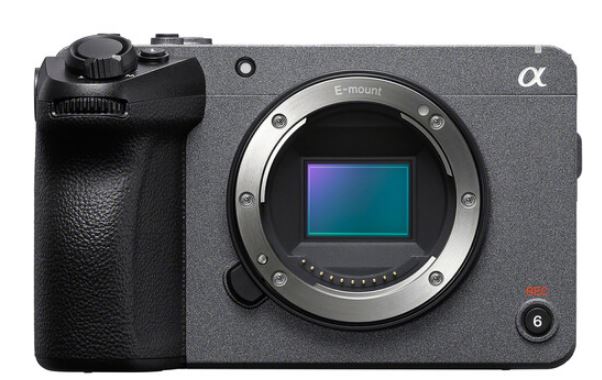
The Sony FX3 camera was announced back on February 23, 2021. It was a full-frame mirrorless consumer cinema camera. It was made to make cinema cameras within the reach of more and more professionals—those who love to have a compact body with all the possible features of a professional cinema camera. The FX3, at the time of the announcement, had a 12.1-megapixel CMOS sensor that was used in the Sony A7S Mark III camera and featured 4K Ultra HD video recording up to 120 frames per second and 10-bit 4:2:2 XAVC S-I internal recording.
Limitations of Sony FX3
But at the time of the announcement, the camera was lacking an internal RAW video recording mode, and of course, the FX9 also does. But with the FX3, we do have an option to get 16-bit RAW video by the HDMI port, but again, no option to record RAW internally.
The other option that was missing inside the FX3 is open-gate recording, which is now available in almost all Panasonic and Fuji cameras. Even cameras like the Panasonic S9, S5 II, Fuji X-S20, and Panasonic S1R Mark II now offer open-gate recording.
What Rumor Mills Are Saying This Time
A lot of rumors indicate potential upgrades to the sensor, including a global shutter sensor, which is coming from SAR.com
What We Know So Far about Sony FX3 II
New features are coming inside the FX3 Mark II camera, which will fill the gaps of the first version of this camera.
- The first feature that we are about to receive in the FX3 Mark II is an open-gate recording in a 3:2 format, which is almost confirmed. After a very long wait, Sony professional users will be getting open-gate recording in their upcoming professional camera.
- The other confirmed set of features includes 12-bit internal RAW internal video recording, which is about to arrive inside this camera. It’s really a kind of exciting moment to see these new features that we have never witnessed or seen in Sony’s professional consumer-grade cameras coming along with the FX3 Mark II announcement.
- The Next Cinema Camera from Sony is FX3 II, Arriving before Q3 of 2025.
Why Do Internal 12-bit RAW and Open Gate Actually Matter to Professionals?
A RAW video that a camera records is uncompressed or minimally compressed data, which is directly coming from the sensor without passing through different algorithms, providing the maximum latitude possible for color grading and other post-production adjustments. 12-bit video offers color depth, allowing users to have smooth gradients as well as better dynamic range handling compared to other lower bit-depth or compressed video codecs. So, having these capabilities internally means filmmakers can enjoy filmmaking and can get the maximum possible advantage of the sensor being used inside the camera, which other camera makers are also giving right now.
Another important aspect, professional content creators nowadays use open-gate recording to handle the content for multiple platforms simultaneously. These content creators need to adapt footage for various platforms recording at the same time, and by recording the full sensor, they can crop out aspect ratios required for post-production without losing the video quality of the camera.
It’s a Time for Upgrade
Sony’s higher-end cameras like the FX9 and FX6 do not support internal RAW recording and require an external recorder to capture 16-bit RAW via SDI output, and that’s the most frustrating thing for many professionals out there. That’s why, possibly, they are migrating to different brands such as Panasonic Lumix at this moment. So, the market pressure from the competitors for having internal RAW video recording as well as the open gate has led Sony to innovate these features in the FX3 Mark II (based on the information we have ). If they fail to innovate, they will not remain competitive with others, and that will be a big mess for the brand’s consumer base. Given the success of the FX3 and the growing market demand for hybrid cameras as well as advanced video features, this is the best time for Sony to release the FX3 Mark II camera with extended capabilities.
The article “Sony FX3 Mark II to Feature Open-Gate and 12-Bit Internal RAW” was first published on TheNewCamera.com by TheNewCamera Team. Follow us on our social pages FACEBOOK | TWITTER | INSTAGRAM, If you have time –>see more Sony Alpha Rumor
By admin, on March 17th, 2025
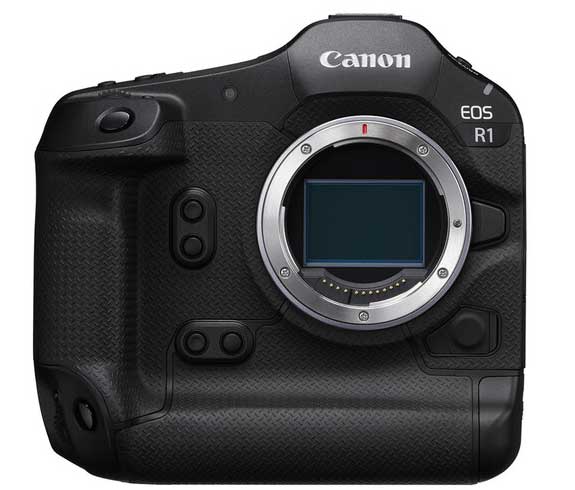
E88_8888 which is very good and accurate in bringing out the latest camera registration information from the wireless certification agency, posted a prediction for the EOS R1 Mark II, that it will use a Global shutter sensor.. the prediction looks logical to me, and that why I have decided to publish. As global shutters are now being used by Sony in their professional A9 III camera which is made for sports and wildlife shooters, and Canon has a history of sensor innovation. But, the current Canon R1, launched in 2024, lacks a true global shutter, suggesting this could be a natural upgrade.
By comparing the information before and after the interview, EOS R3 was originally a product of manufacturing dissatisfaction with EOS R1 and turning to test all new functions.
EOS R3 has been well received by the professional market, but it has defined the product style of EOS R1: professional control, balancing the triangle of resolution, high sensitivity, and readout speed.
I personally predict that Canon’s next flagship EOS R1 II will focus on its own semiconductors and develop a global shutter with stacked voltage memory.
This solution is mature and reliable, and in line with Canon’s tone.
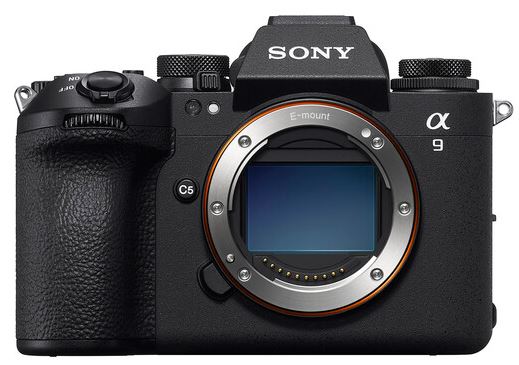
Canon R1 Flasghip is slow in front of the Sony A9 III camera
Since Sony now has the Global shutter sensor in their fastest camera and as we all know Canon isn’t into the Megapixel race, the nearest true competitor of Canon’s fastest flagship Canon R1 camera with 24MP Full-Frame Stacked BSI CMOS Sensor and Continuous Shooting Up to 40 fps at Maximum Resolution with AF/AE, and we have Sony A9 III with 24.6MP Full-Frame Global Shutter Sensor and the Sony offers Up to 120 fps at Maximum Resolution with AF/AE support.
Sony’s Competitive Edge
As you all know, Canon’s biggest competitor in the mirrorless domain right now is Sony, and Sony’s sensor research and development team is already using global shutter sensors in their Alpha A9 III. That makes Canon look weak in terms of being called a No.1 Camera brand, although they do have faster stack readout CMOS sensors in their flagship camera, they are completely lagging behind the competition when compared to Sony’s sensor A9 III technology.
Canon’s Focus on the R1 – Speed over Resolution
As we all know, in a recent interview, Canon Chief Tokura clearly stated that they are focusing on the high-speed Canon R1 camera only, and there will be no other variant of the flagship camera that will have a higher resolution. If someone wishes to have a higher-resolution sensor, then the best option is to go for the Canon R5 series.
“We consider the flagship to be at the pinnacle of our lineup, which means we’re not going to have two flagship models,” Tokura told PetaPixel. “We’ve put everything—the best performance and trust—into the EOS R1.”
So if Speed is a priority, then they have reached the max physical limits of the stacked CMOS sensor in the R1, and if they don’t migrate then after the announcement of the Sony A9 IV with 2nd generation of global shutter sensor in the next 2-3 years their Flagship will become completely obsolete in terms of technology. – thenewcamera
Again, global shutter sensors are not new to Canon. They had already introduced the EOS C700 GS camera back in 2016, but the price was $40,000. So, of course, the camera was not accessible to everyone, but what I want to say is that global shutter sensors are not new to Canon, and they developed working models of the global shutter sensors back in 2016. Also, take a look at the list of patents related to Canon Global Shutter and High-End Sensors
List of Canon Global Shutter and High-End Sensors:
| Patent Number |
Title |
Publication Date |
Filing Date |
Relevance to Global Shutter |
| US10659706B2 |
Photoelectric conversion device and imaging system |
May 19, 2020 |
April 17, 2018 |
Explicitly mentions global electronic shutter function |
| US20180233523A1 |
Solid-state imaging device and camera |
August 16, 2018 |
February 13, 2018 |
A stacked sensor design likely enables a global shutter |
| US20180234605A1 |
Imaging element and imaging apparatus |
August 16, 2018 |
February 13, 2018 |
Exposure control supports a high-speed global shutter |
Announced Canon Global Shutter sensors:
| Sensor Model |
Type |
Resolution |
Readout |
Application |
| LI5030SAI |
Color/Near-Infrared |
19MP |
12-bit, 57.99 fps |
Industrial, high-speed |
| LI5030SAN |
No Microlens/Filter |
19MP |
12-bit, 57.99 fps |
Industrial, high-speed |
So, if Canon wants to introduce a global shutter full-frame CMOS sensor in its R1 series camera, it can do so since it already has the technological backing.
More Cameras with Global Shutter Sensors in the Next 3 to 4 Years
Nikon also got access to global sensors when they acquired RED and RED, of course, has a very close relationship with Tower Jazz, (Partnership with TowerJazz: RED partnered with TowerJazz for their cameras’ 20-megapixel global shutter Super 35mm sensors, ) which is one of the leading suppliers of global shutter sensors to RED’s camera system.
Additionally, Nikon also has a very good relationship with Sony’s imaging division. The sensor manufacturing unit and the imaging division are completely different from Sony’s Alpha division. So, if they wish to acquire the Alpha A1 sensor for their future Z9 II model, they can get it since they already have access to many Sony sensors.
As you can see where the competition is heading, in the next 4 to 5 years, camera makers will have multiple global shutter models in the flagship zone, and if Canon fails to do so, they will surely lag behind the competition.
Follow us on our social pages FACEBOOK | TWITTER | INSTAGRAM to get live Camera News + Canon rumors 24X7
source E88_8888
By admin, on March 15th, 2025
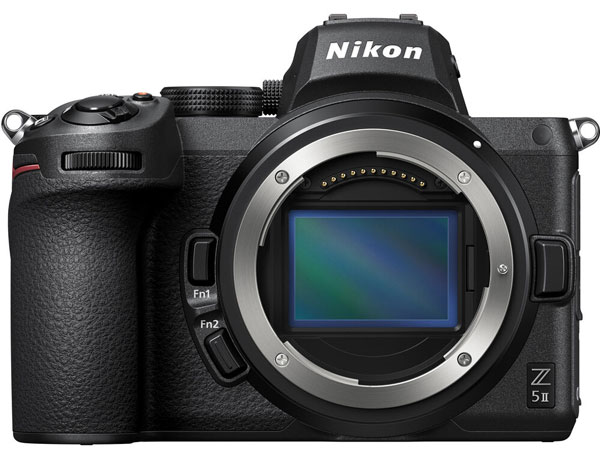
Twitter account How to Fly said the Nikon Z5 II is coming in April, not March 2025. How to Fly, who has hit the mark on multiple pieces of information in the past, has released some information related to Nikon. The Z5II was rumored to be announced in May, but he stated it will be announced in April.
how2fly
The Nikon Z5II will be announced in April (not May).
He has a high success rate when it comes to Tamron-related information, but he has also been correct in his predictions about Nikon-related information. Although it is unclear how he obtained this information, it may be promising.
Nikon Z5 Mark II Price
- The price of the Nikon Z5 Mark II camera is expected to be around $1499 (approximate figure), and that is said to be the announcement price of the camera.
This is the information we have known so far. Now, let’s organize it in a table and list the specifications of the Nikon Z5 Mark II camera.
Nikon Z5 Mark II Specifications
| Feature |
Specification |
| Sensor |
24.5MP Full-Frame BSI CMOS Sensor |
| Processor |
Expeed 7 Image Processor |
| Video Recording |
4K UHD 30p / Full HD 120p, 1.5x 60p with crop |
| Autofocus |
273-Point Hybrid AF with Eye and Animal Detection |
| Image Stabilization |
5-Axis In-Body Image Stabilization |
| Viewfinder |
Bright 3.69M-Dot OLED Electronic Viewfinder |
| Display |
3.2″ Tilting Touchscreen LCD |
| Memory Card Slots |
Dual UHS-II SD Card Slots |
| Connectivity |
Built-In Wi-Fi and Bluetooth Connectivity |
| Charging |
USB-C Charging and Power Delivery Support |
Follow us on our social pages FACEBOOK | TWITTER | INSTAGRAM to get live Camera News + Nikon Rumors 24X7
By admin, on March 14th, 2025
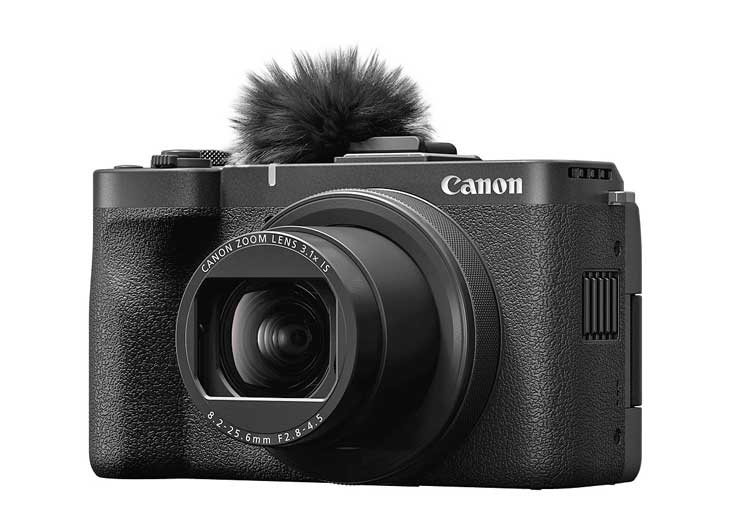
According to the latest rumor surfaced over the web, Canon will be announcing their Canon RV, Canon PowerShot V1, as well as Canon R50 V on or around March 26, 2025. Let’s explore the possible set of details we have related to these cameras.
1. Canon V1 Camera
The Canon V1 camera is a compact camera that is already announced in the Asian region. We already have the full core specifications and even a comparison with the Sony ZV-E10 camera. So, V1 is about to arrive officially in the USA and European region. Canon has already announced it in Asia, check details below
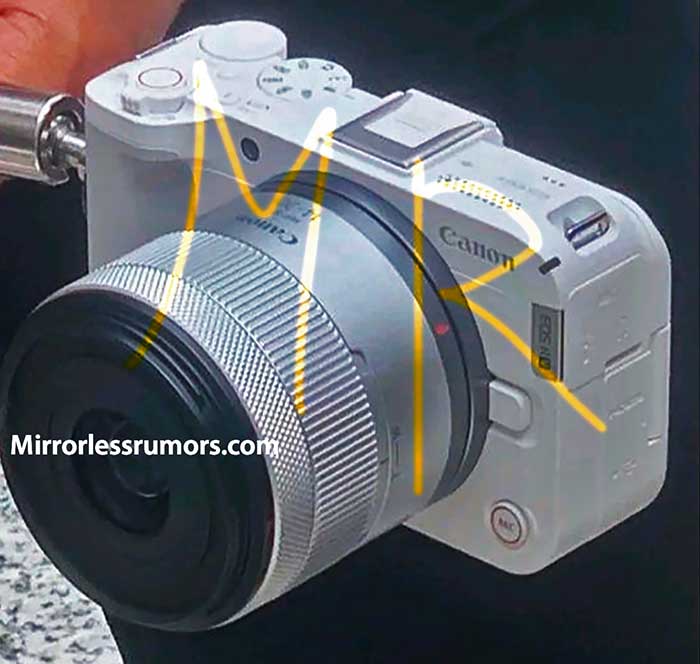
The image of the Canon RV camera was leaked a while ago, which gives a clear indication that the announcement is near. We have also analyzed the image of the leaked Canon RV camera. From the design, it looks like an entry-level interchangeable-lens mirrorless vlogging camera made for beginners. With its price and features, it will compete against the existing Sony ZV-E10 camera. Just like we have the Canon R100 camera in the entry-level zone for photographers, the Canon RV will be the beginner model for the vlogging mirrorless series.
3. Canon R50 V
Canon R50 V is also rumored to be announced on the same day, but we have the least information about this camera, and we are waiting for more details related to the same. So, we are very sure about two announcements—the first, which has already been announced in the Asian region, the Canon V1 compact camera, and the other, the Canon RV. As soon as I get more information, I will be updating you.
Stay tuned stay updated
Get LIVE RUMORS –> FACEBOOK | TWITTER | INSTAGRAM to get live news + Canon rumors 24X7
source Canonrumor.com
By admin, on March 13th, 2025
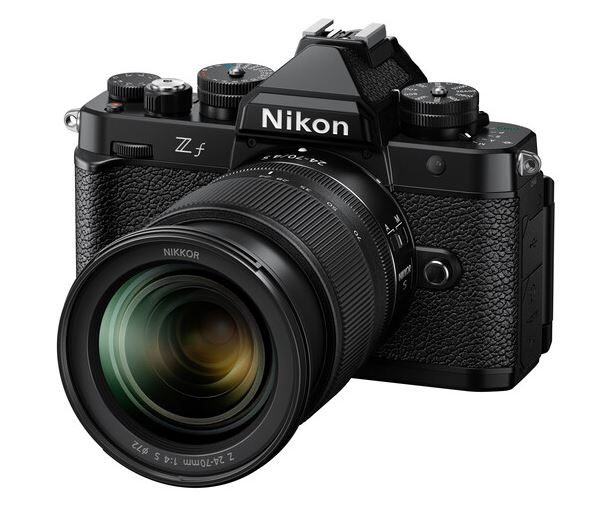
Just imagine a camera that fuses the soul of vintage photography with a higher resolution sensor, and yes, we are talking about the possibility of Nikon Z FR. We are actually waiting for the Nikon Z7 Mark III, but photographers are quite a bit excited about the next possible variation of the ultra-popular Nikon Z F camera. Leading to the success of ZF, there is a high probability that a higher-end variant of the existing ZF will be introduced.
The Nikon ZFR concept was not created by us; the credit goes to one of my favorite photographers, Matt Irwin. He is a Nikon Z system camera user as well as very close with Nikon, and just before this article, we had published his predictions related to the upcoming Nikon RED Raptor camera announcement, which was 100% true. So now, let’s discuss what he has said in the video related to the Nikon ZFR camera.
To me, the way that you make this a killer camera is you do something that Nikon has done already and has been greatly successful, and we’re also seeing other manufacturers do it. That is this—you put that more advanced, let’s say roughly 60-megapixel sensor, into a retro body, a ZF-style body, and we could call it the ZFR. – Matt Irwin
Nikon ZFR Specification
- 60MP sensor
- Retro ZF-style body
- Higher-quality sensor (possibly 16-bit or improved dynamic range)
- Aimed at photographers who don’t need high speed
- Could be called the “ZFR”
Let’s Discuss the Speculated Nikon ZFR Specs: What’s Under the Hood?
A 60-megapixel full-frame sensor is not new; it has been in the camera industry for approximately the past 5 years, starting from Sony A7R IV. Then we have it in the Sigma FP camera; we also have it in the Sony A7R Mark V, so it is quite a commonly used sensor by many, and it’s a decent upgrade from Nikon Z7 II. So yes, it’s a very good possibility that either the upcoming Z7 Mark III or the ZFR camera may use the same 60MP sensor.
Medium format cameras like Hasselblad X2D 100C and Fujifilm GFX 100 offer 16-bit RAW due to their larger sensor architecture. So at this point, I certainly disagree with Matt—16-bit color recording capability is only limited to medium-format sensors in the current generation. And if Matt is talking about utilizing the same 60MP sensor used in cameras like A7R IV or Sigma FP, it remains limited to 10-bit to 14-bit recording due to its semiconductor design, and there is no way to upscale it if Nikon uses the same variant of the 60MP sensor.
Now, there is a huge possibility, and if Matt is trying to hint that this camera can record 16-bit color depth, that indicates Nikon is working on a brand-new 60MP sensor, maybe with Towers Jazz or other semiconductor manufacturers. So there can be a possibility if it’s true. thenewcamera admin
Talking about the modest speed, 10 frames per second is more than enough for those who love to have a high-resolution body. And for those who need speed, yes, we do have cameras like Nikon Z8 and Z9. Without a doubt, they can go with these bodies.
8K video recording capability has now become the norm for professional full-frame mirrorless cameras.
Design is the main factor here. When you consider the design, it is loved by many professional photographers, and it is one of the best-selling cameras from Nikon to date. The only thing that I would love is if Nikon’s Design Department is able to add a proper hand grip to the ZF design, since we currently have to buy one from SmallRig. If they are able to do so, that would be great.
Nikon ZFR Arrival Date
Now, here is the million-dollar question—when will the Nikon ZFR arrive? According to Matt, the camera is expected to arrive sometime in late 2026 or early 2027. That clearly indicates that the ZFR-style camera is still in the development phase, and a lot of alpha and beta testing has to be done before it reaches a production model.
Final Thoughts: Is the Nikon ZFR Worth the Hype?
Nikon ZFR has a lot of potential just by its name alone. And once we heard about it, we thought, “Yeah, it is a huge possibility, and we have to cover this as soon as possible.” It actually shows Nikon’s vision of the future and how broad and versatile it is. And the good thing is, it’s not about replacing any existing prime cameras—it’s about creating a brand-new space for those who love to have a retro-style camera in their hands with a high-quality, full-frame sensor, which is still missing from the Fuji brand—either you have to pick an APSC, or you have to jump into a medium-format zone.
Having said that, the camera world is evolving, and we would love to see the ZFR camera from Nikon.
Let us know what you think! Does the Nikon ZFR camera look attractive with these specs, or would you love to see a different variant with a higher-resolution sensor? Let us know in the comment section. Stay tuned to thenewcamera.com for the latest updates!
Article Update Log: The article “Nikon ZFR – Specification, Rumors, and Release Date” was first published by thenewcamera.com team on March 13th, 2025
Support us – Use or affiliate link Amazon.com | B&H Store | Adorama.com for the next purchase u make – it helps us 🙂
Follow us on our social pages FACEBOOK | TWITTER | INSTAGRAM to get live Camera News + Nikon Rumors 24X7
Best Budget Wildlife Lenses for Nikon Z Mount in 2025
source Matt Irwin Photography
|
KEEP THIS BLOG ALIVE - Support New Camera Buy Canon Lenses, Buy Music CD or Digital Camera at amazon it helps this site, and you do not pay anything extra, it is just a way to help support this site.

|















